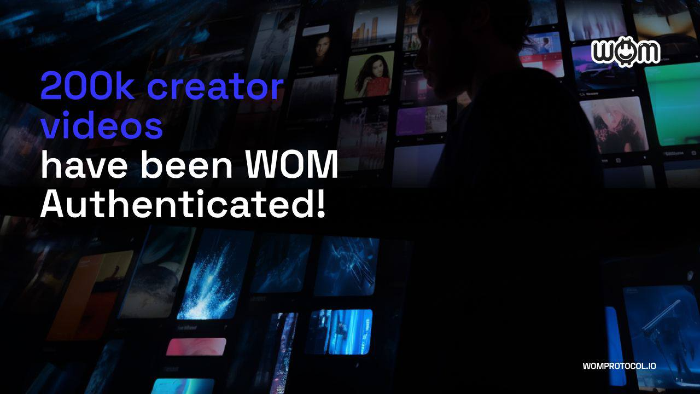Today the WOM Protocol took another successful step forward as the 200,000th content creator video was authenticated.

Building a protocol layer is no easy task, involving many stakeholders and multiple needs, which makes moments such as these even sweeter, because they demonstrate the protocol working in action. So let’s stop and take a look inside the machinery of the WOM Protocol to understand how we reached 200k authenticated creator videos.
Here’s our purpose and mission
At its essence WOM is a Marie Kondo style clean-up of Web2 digital advertising, and its purpose is to replace the cluttered space of digital advertising in both the Web2 lifestyle sector, and in Web3, with something much simpler: word-of-mouth marketing. To achieve this WOM has developed a number of Web3-based marketing tools, including the BULLZ app, which incentivizes and rewards content creators for authentic user-generated content (UGC) about their favorite Web3 projects. This video-based content provides quality visual social proof that can be purchased and used in place of digital advertising to promote products and services.
For years the big social media network corporations have built multi-billion dollar revenue streams on digital advertising without recognizing or rewarding the content creators whose sweat and creativity brought the platforms the attention they needed to generate their income. Now one of the biggest issues across Web2 is that no one wants to see ads anymore. When was the last time you opened an app and found the immediate interruption of an advert anything less than annoying?
This is the process
The WOM Protocol essentially provides an alternative revenue stream for everyone who currently makes money through the Web2 advertising model, including advertisers, publishers, and platforms, while ensuring that content creators receive their fair share – and distributing revenues in an automated and trustless way. You can read more about how rewards are distributed in the WOM Economy Paper.
The WOM Protocol goes one step further to bring trust into the content – something that has long been missing not only from advertising, but from social media at large. It does this through the addition of another stakeholder – the WOM Authenticator – who peer-reviews the UGC videos submitted by content creators to assess their authenticity. Authenticators review videos based on three criteria:
-
Authenticity: Is it an honest, reliable, and trustworthy recommendation that is not sponsored or faked?
-
Creativity: Did the creator make an effort to use creative elements?
-
Positivity: Does the content spark desire for the specific product, brand, or service?
Content creators are only rewarded once their video passes the authentication process and based on the video’s subsequent engagement to protect the quality and trustworthiness of WOM content.
Authenticators are also only rewarded providing they reach a consensus with other authenticators. You can read more about authenticator payments here.
This is a big thank you ❤️
All of these complex parts working together – content creators making recommendations and getting rewarded, authenticators bringing trust into the content, and advertisers gaining access to use the content instead of ads – tell the story of how our SocialFi use case has evolved.
We’re proud to now have more than 200,000 authenticated content creator videos proving that WOM Protocol is live and working, and we are truly grateful to every single creator and authenticator in our community who made this happen.





Comments